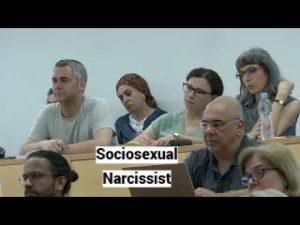Summary: Understanding Narcissist Interpersonal and Intimate Relationships
1. Introduction to the Conceptual Framework
- The speaker introduces a new integrated conceptual framework synthesizing Sanders’ shared fantasy and the dual mothership principle to explain narcissistic behaviors in relationships. The framework aims to provide clear answers to the erratic and confusing behaviors of narcissists, especially their fluctuating idealization and devaluation phases [00:00].
2. Shared Fantasy Concept
- Shared fantasy is described as a psychological space where the narcissist safely re-experiences childhood trauma, separated from painful reality. This “fantasy” is complex and contradictory, making the narcissist’s behavior appear confusing and non-sensical to others, though perfectly logical from their perspective [02:00].
3. Stages of Shared Fantasy
a. Idealization Phase (Love Bombing)
- Narcissists idealize their partners intensely to create the “Hall of Mirrors” effect, making partners addicted to their own idealized image as reflected through the narcissist’s gaze. This also serves the narcissist’s need to idealize himself by possessing an internal perfect image (introject) of the partner; this internalization connects the narcissist’s self-worth to the avatar of the partner [05:30].
b. Dual Mothership Phase
- The narcissist converts the partner into a maternal figure, substituting for the original mother with whom he failed to individuate due to an emotionally “dead” or abusive mother. This phase includes reciprocal idealization where the narcissist also mothering the partner. The dynamic is addictive because it represents a second chance at what the narcissist missed in childhood [10:00].
c. Mental Discord Phase (Beginning Separation)
- The narcissist starts mentally discarding the partner, but this creates abandonment anxiety and narcissistic injury since it implies the narcissist was wrong in idealizing the partner initially. To cope, the narcissist devalues the partner externally, which restores his grandiosity and reduces anxiety, allowing him to prepare for actual discard [17:30].
d. Splitting and Devaluation of Internal Object
- There is a conflict between the idealized internal image (introject) of the partner and the devalued external partner. The narcissist resolves this by splitting the internal object into “all bad,” which allows him to remain “all good” and ready to discard the partner. This primitive defense mechanism creates a polarized all-good or all-bad worldview [22:30].
e. Discard and Internal Conflict
- When the narcissist discards the partner in real life, the devalued internal representation (introject) remains in his mind, causing anxiety and discomfort because it conflicts with his grandiose self-image. The narcissist tries to offload this negative introject onto the partner by coercing them to accept negative attributes, but often fails. This failure causes persistent internal distress [27:30].
4. Introject Constancy and Anxiety
- Narcissists have introject constancy (emotional attachment to internal images rather than real objects), so discarding an introject causes abandonment anxiety akin to losing a loved one. Since partners rarely accept the devalued role, the narcissist remains stuck with this toxic internal representation [33:00].
5. Hoovering and Re-Idealization Cycle
- To resolve the anxiety caused by the devalued introject, the narcissist attempts to re-idealize the partner externally, which then allows re-idealization of the internal object and reduces anxiety. This leads to the recycling or hoovering phase, making true separation nearly impossible and perpetuating relationship cycles [37:30].
6. Repetition Compulsion and Narcissist’s Dilemma
- The narcissist is caught in a loop: wanting to separate from the maternal substitute but unable to do so without damaging grandiosity. Devaluation is a healthy step toward individuation, but narcissistic pathology often reasserts, forcing re-idealization to maintain grandiosity. Separation rarely succeeds except in cases of severe personality change (modification) [43:00].
7. Exception: Narcissistic Modification
- Severe narcissistic modification (mortification) destroys the narcissist’s false self, leading to a rebirth or reinvention. This breaks the cycle by erasing past memories and introjects, which stops the hoovering and re-idealization dynamics and allows for healthy development [49:30].
8. Recap and Clarifications
- Summary of the framework outlining stages: co-idealization, dual mothership, mental discard, devaluation, splitting, discard, internal conflict, hoovering, and exception through modification. The speaker also clarifies misconceptions equating narcissists with cuckolds, explaining that while some narcissists encourage partners toward others, they are fundamentally different phenomena [52:00].
This detailed topic-based summary references key timestamps from the meeting transcript for easy review and deeper study.






